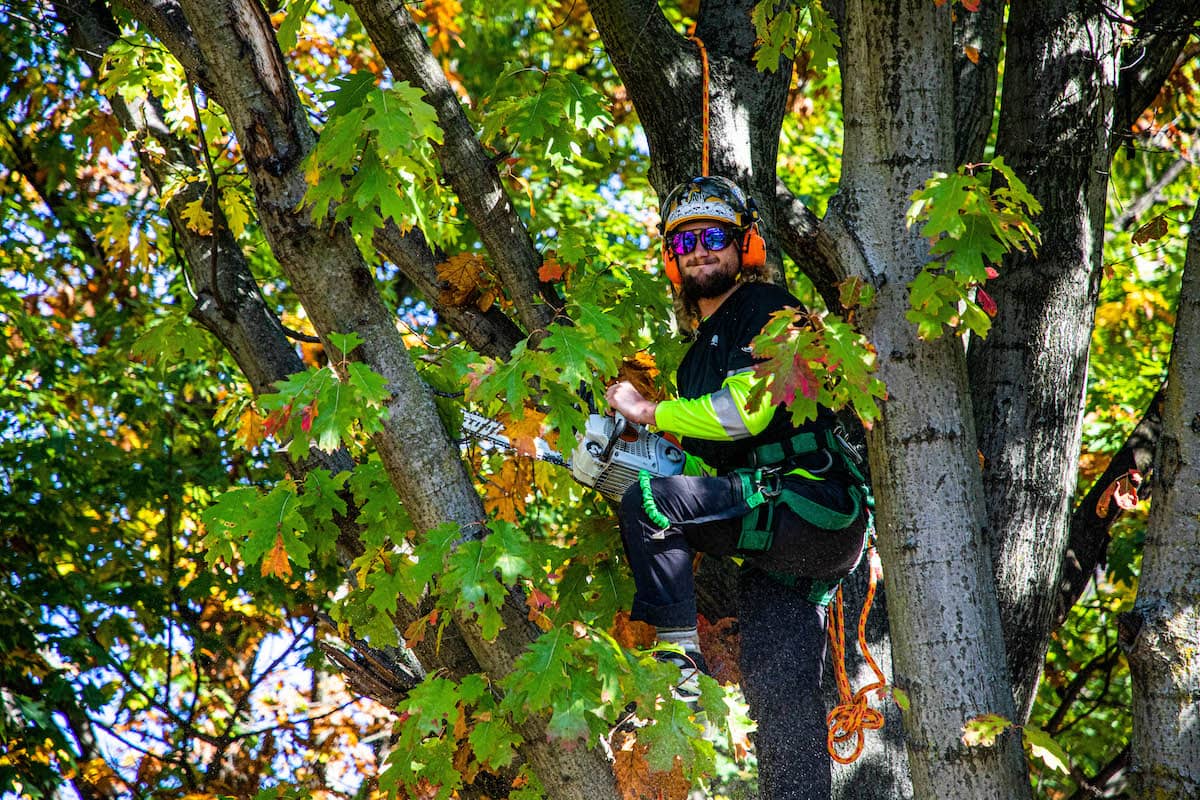AS A SUPPORTER of American Forests, you know that we have exhibited unstinting leadership on climate change, including but not limited to the ways that trees and forests can help. For the past five years, we have innovated new climate-focused forestry tools and techniques, pivoted our own place-based forestry activities to become leadership-by-example in climate-smart forestry, and led the whole forest community to speak out on climate change and to advocate for climate policy.
The Inflation Reduction Act, enacted last August, delivers on American Forests’ climate leadership goals unlike any other piece of legislation in United States history. At a moment of true climate peril, this legislation pushes aside decades of political paralysis to choose climate action. It funds diverse climate solutions to advance them all farther and faster than ever before — including protection and restoration of forests.
Trees and forests are key to natural carbon removal, whether on city streets, farms or national forests. An average tree in the U.S. captures more than 1,300 pounds of carbon dioxide equivalent over its lifetime. This adds up: Trees and forest products in the U.S. currently capture and store the equivalent of 17% of our nation’s fossil fuel carbon emissions annually.

Photo Credit: Jad Daley
But there’s lots of room for improvement. Planting more trees would increase U.S. carbon-sequestration capacity. The Reforestation Hub, an online tool jointly created by American Forests and The Nature Conservancy, provides county-by-county data showing 146 million acres of ecologically suitable land for reforestation, enough to grow more than 75 billion trees. Reforesting all of these lands would increase annual carbon capture in our forests by nearly half. Additional actions, like conserving forests at risk from development and supporting adoption of climate-smart forestry practices by private landowners, can increase this number even further.
The Inflation Reduction Act invests in these kinds of forest-climate solutions in unprecedented ways, including dedicating roughly $8 billion dollars for reforestation, climate-focused restoration and permanent conservation of public forest lands; carbon incentives for private landowners; and funding for agroforestry.
These carbon benefits alone would justify the bill’s investment in nature-based climate solutions, but fighting climate change with nature is also valued for a second reason: Investing in nature can solve many problems at once.
Just consider that our climate crisis is fueling a public health crisis. Extreme heat is our number one weather-related cause of death, and U.S. heat-related deaths are expected to rise to 100,000 annually by the end of the century due to climate change.

Photo Credit: Aleksandr Watson / American Forests
Fortunately, those wonderful carbon capture devices — trees — are also our most powerful natural solution for heat, with the ability to cool the air beneath them by more than 20 degrees Fahrenheit. That’s why American Forests has called for Tree Equity in our cities and worked with partner cities, such as Phoenix, Detroit and Boston, to help launch initiatives to spread equitable tree canopy citywide. This will save lives and energy while naturally capturing more carbon emissions.
Today, the federal government has only been providing a few million dollars per year in grant funds to help cities advance this vital and often expensive work. We have advocated tirelessly for more than four years with champions in Congress, including Senator Cory Booker, Senator Debbie Stabenow and Representative Donald McEachin, to advocate for a federal investment in equitable tree cover that matches the urgency of this issue. I’m very proud to share that, with the Inflation Reduction Act, we got that investment: More than $6 billion in funding will focus on increasing urban tree cover and heat resilience.
In our Washington Outlook section of this issue, you can read more about how the Inflation Reduction Act will put forests front and center.
I was proud to join President Biden and congressional leaders at the White House on Sept. 13 to celebrate this historic climate accomplishment. Our only chance against climate change is an “all of the above” approach, and the Inflation Reduction Act makes similarly unprecedented investment in other climate solutions, such as clean energy and electric vehicles.
At this moment of profound climate hope, the American Forests team and our many great partners have already quickly moved from justified celebration to the long game of implementation. For example, we’re already forming partnerships with federal agencies to advance projects that can put the new funding to its intended uses. If we stick with it and get the details right, the Inflation Reduction Act will power natural climate solutions with a rigor, speed and scale never seen before.
Thanks for your steadfast support as American Forests has stepped into climate leadership over the last five years. This historic success shows that momentum is on our side.
For more news and updates from Jad, follow him on Twitter.